Pololu Blog » Engage Your Brain »
More fun machines, part 2
I posted toward the end of last year about some new equipment we were adding to our manufacturing operations and said the best stuff was still coming. I and several others at Pololu have since had some more personal deliveries of the crying-all-night sort, which delayed my promised update. I still do not have the performance information I had hoped to have by now, but let’s at least look at what we got:
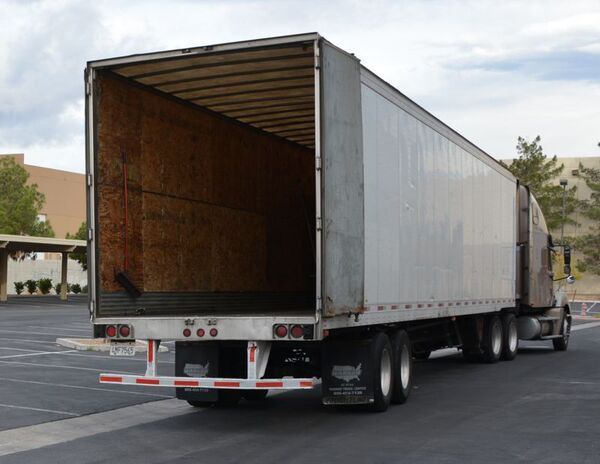 |
I am pretty happy with our current building, but one limitation is that we do not have any loading docks. The main crate for this shipment was over 6,000 pounds, so we needed to rent a much bigger forklift than our usual one. I stressed to the vendor and freight company that we do not have docks and that we would need the crate at the back of the trailer since the forklift would not be able to drive in. As you can see, the delivery arrived with our crates way in the front of the trailer.
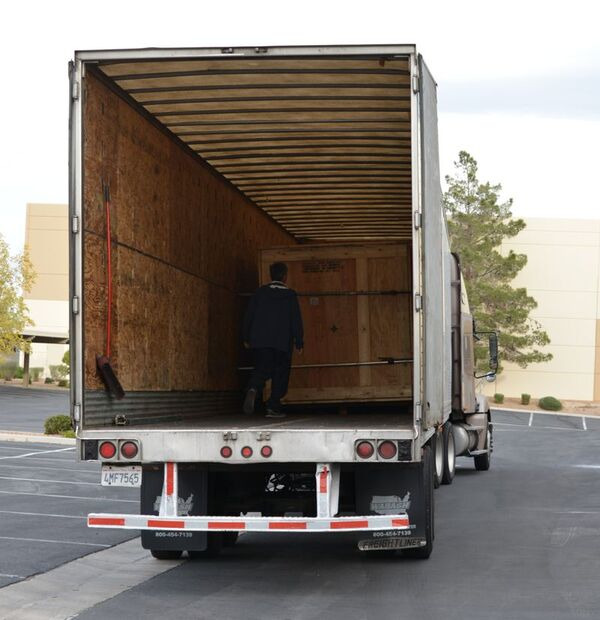 |
Fortunately, the equipment rental company had run out of the more regular 10,000 pound forklift we had reserved and had sent us this beast instead:
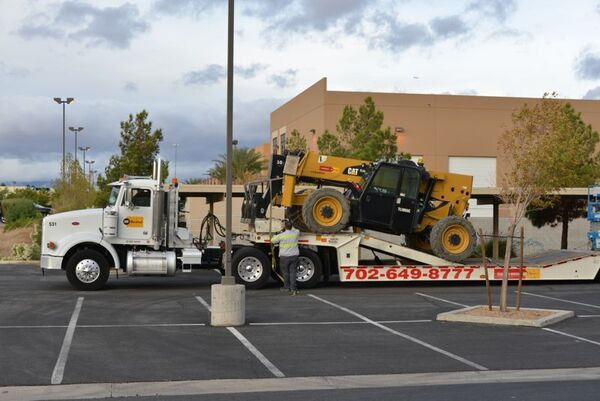 |
Even then, reaching into the trailer to fish out the crate was more difficult than you might expect: everything has to line up just right, and there wasn’t much clearance between the top of that boom and the ceiling of the trailer.
 |
 |
Another complication was that the forks were shorter than the 6 feet we had ordered. We strapped the crate to the forklift and had the truck drive away, hoping the straps would hold.
 |
Maybe the moms will object, but this picture sequence, especially that last picture, somehow reminds me of baby delivery. Once the big crate was out, we quickly unloaded the remaining six crates with pallet trucks in the trailer and our regular forklift. Even the big crate was much more manageable once we could pick it up from the side, and the stakes were much lower with it three inches off the ground instead of three feet off the ground.
So, what was in the crate? A Europlacer iineo pick and place machine! (Or P&P, or P ‘n’ P, or PnP machine.)
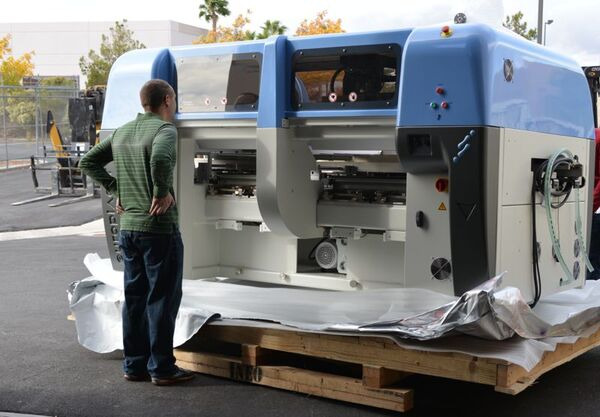 |
Ben checking out the new pick and place machine. |
|---|
The big forklift was too big to maneuver inside the warehouse, so we had to drag the uncrated machine on pallet trucks for the final few hundred feet.
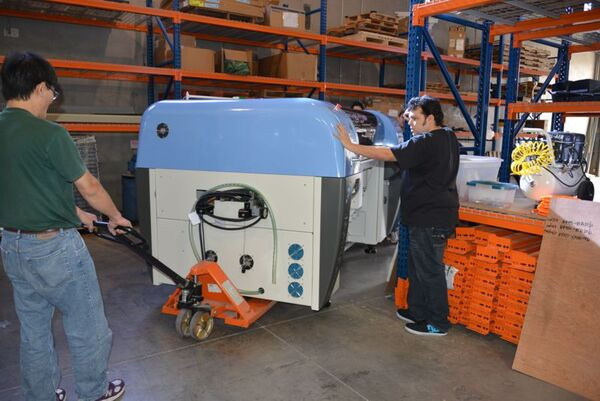 |
Transporting Europlacer pick and place machine through the warehouse. |
|---|
It’s much easier when the machine is small enough to fit on our small forklift since our manufacturing room is right next to the warehouse.
 |
Stencil printer being delivered right to manufacturing room. |
|---|
However the equipment gets to the manufacturing room, final positioning is manual. The machine looked smaller once it was out of the crate in the warehouse, but it seemed a lot bigger again once it was in manufacturing.
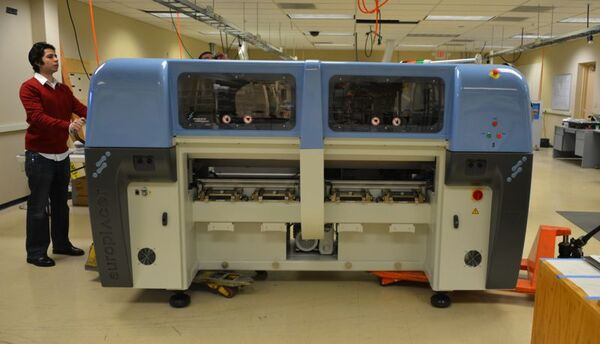 |
Positioning Europlacer pick and place machine in manufacturing room. |
|---|
With a fully automated stencil printer and a conveyor in front of the pick and place machine, our production line is 32 feet long from the end receiving the bare boards to the end where assembled, soldered boards emerge. Aligning and leveling the five pieces of equipment took several hours. It didn’t help that the Europlacer arrived with a lower-than-standard conveyor height, which the manufacturer recommends because the machine is already so big. Because the feeders are all on little carts that also have to match the height of the P&P machine, we had to decide between raising the machine and all the carts or lowering the stencil printer, conveyors, and oven. We ended up opting for the lower line.
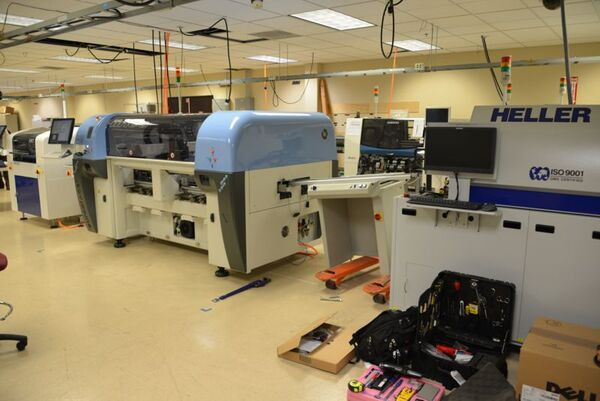 |
Aligning the Europlacer electronics manufacturing line. |
|---|
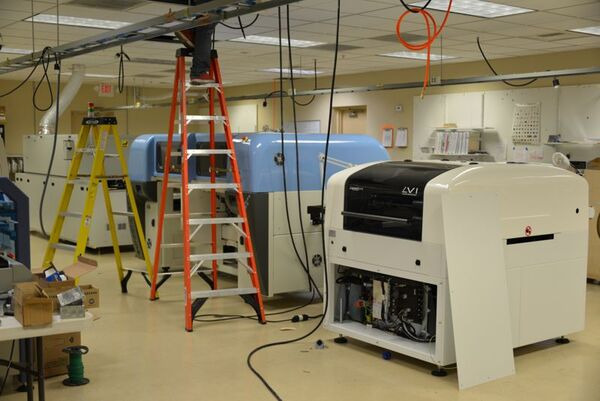 |
Installation of Europlacer pick and place line. |
|---|
With our three older pick and place machines from Manncorp, including the first one that is now nine years old and still running, we are up to five P&P machines. Here is our complete Europlacer pick and place line, with the Samsung P&P line in the background:
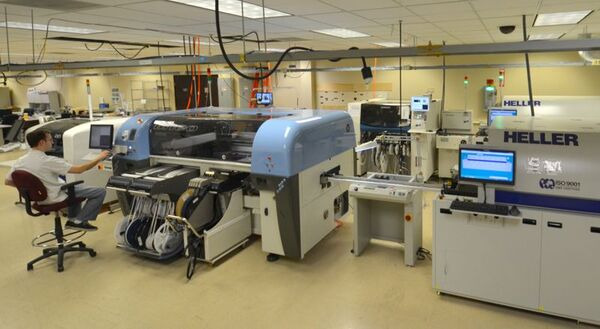 |
From talking to various equipment vendors, I get the impression that my move of adding two completely different pick and place machines at the same time is somewhat unusual, though maybe that’s just each vendor preferring I buy two of their machines rather than keeping their competitor in the picture. My main reason for getting these two new machines is that they offer such different solutions to the basic problem of handling a wide variety of designs and component types. Every major aspect of the machines, from the design of the mounting heads to the philosophy behind the feeders, is about as different as I have seen. I believed both machines would fundamentally work, but one machine could be 30% better for us than the other, and we wouldn’t ever know it without trying them. Also, because the two machines are so different, I suspect each will be better for some kinds of board designs, giving us more optimization options.
I do not have the statistics yet to give us some objective comparisons, but so far, we are very happy with both new pick and place machines. Here is a video of the Europlacer assembling our new Zumo reflectance sensor array:
And, for comparison, here is the video from last time of the Samsung place machine assembling some A4988 stepper motor driver carriers:
2 comments
I'm sure you've looked into alternative solutions. A while back, some colleagues and I investigated the loading docks in the 1st/2nd floor ramp of LVCC (+36° 7' 43.24", -115° 8' 57.36") They're just laying out there on Convention Center Dr. They seem rigid, and they pivot.
Thanks for sharing your hiccups with logistics. It makes it seem that these things happen all the time.
Check out my OSHW pick&place: http://www.gaudi.ch/OpenTheremin/index.php?option=com_content&view=article&id=81&Itemid=105
By the way, my Pick&Place machine uses Pololu drivers ;-)













